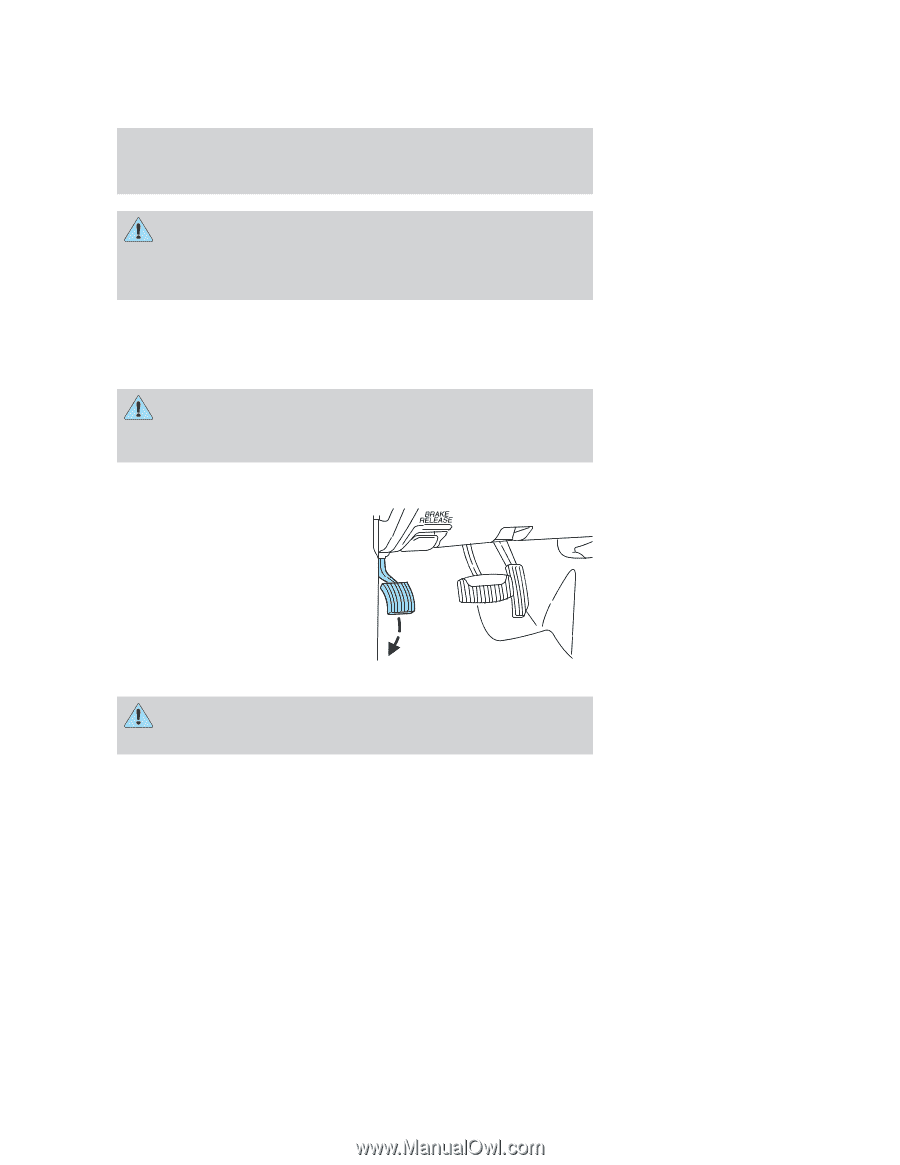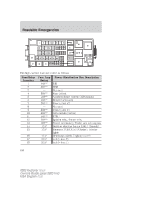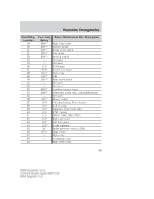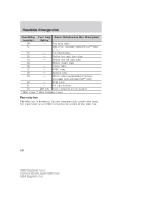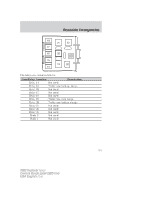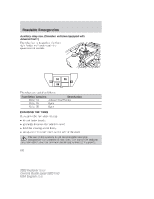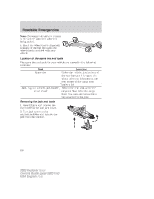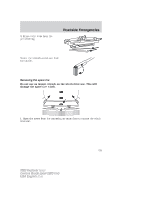2003 Ford Explorer Sport Owner Guide 5th Printing - Page 193
2003 Ford Explorer Sport Manual
Page 193 highlights
Roadside Emergencies If your vehicle is equipped with a tire pressure monitoring system, refer to Tire Pressure Monitoring System (if equipped) in the Maintenance and specifications section for important information. If the tire pressure monitor sensor becomes damaged, it will no longer function. Spare tire information The spare tire can be used as a spare or a regular tire although the spare wheel may not match the regular wheels. If your vehicle is equipped with AWD, a spare tire of a different size than the road tires should not be used. Such a tire could make the vehicle difficult to control as well as result in damage to driveline components. Stopping and securing the vehicle 1. If you get a flat tire while driving, do not apply the brake heavily; instead, gradually decrease your speed. Hold the steering wheel firmly and slowly move to a safe place on the side of the road. 2. Park on a level surface, activate the hazard flashers and set the parking brake. 3. Place gearshift lever in P (Park) and turn engine OFF. When one of the rear wheels is off the ground, the transmission alone will not prevent the vehicle from moving or slipping off the jack, even if the transmission is in P (Park). 193 2003 Explorer (exp) Owners Guide (post-2002-fmt) USA English (fus)
